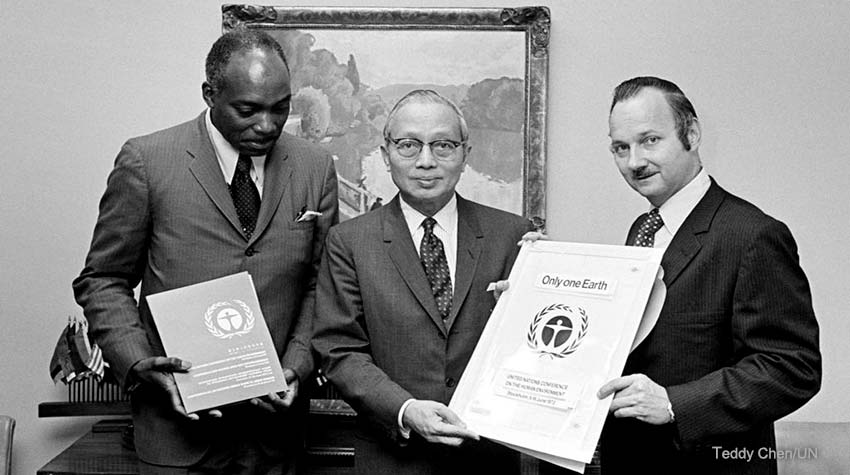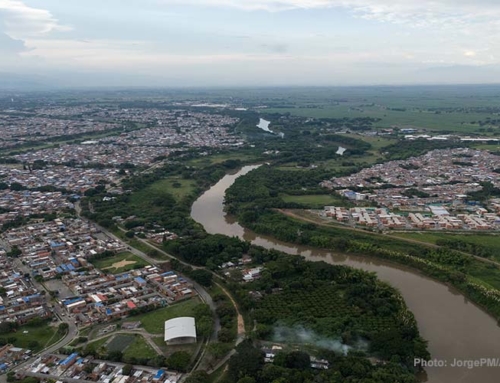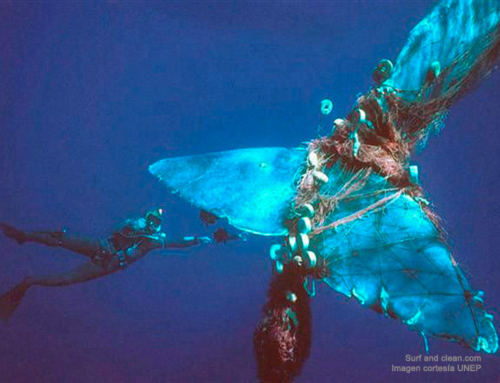At the 1972 Stockholm Conference was everything we should have done, but didn’t do
Going back to Stockholm, in the real sense of the phrase, is impossible. Only in science fiction can you go back to the past. Reversing deforestation of forests is unreal. It can be reforested, yes, but the deforested areas are so immense that planting them again in the times required is a utopia. Lowering the PPM of the atmosphere may be possible, but the technology does not yet exist. Cleaning the oceans, de-acidifying them and restoring degrading reefs is difficult.
Our proposal to “Return to Stockholm” translates into re-analyzing what was established in Sweden and contrasting it with what was done in the following 50 years. We propose a wide and deep review process starting in Stockholm, the beginning point of climate programs, to rectify what is still possible. There must be plenty of scientists, experts, jurists, and people from civil society who want to contribute to it.
The climate revisionism, moreover, should be a wake-up call to countries, companies, and politicians about their responsibility for the small progress made in these 50 years. It should also be a wake-up call to the 99% of people on this planet who are totally ignorant of what happened in Stockholm and the years that followed.
The United Nations Environment Program (UNEP) acknowledges on its website: “Now, 50 years after the Stockholm meeting, the world faces the three planetary crises that threaten its future: climate change, loss of biodiversity, and pollution and waste…”
The good thing is that the spirit of the Stockholm Declaration remains there, with its 7 Proclamations and 26 Principles, written with the genius of women and men of that time, so permanent that 20 years later it was incorporated in Rio 92 and today, half a century later, it maintains its validity and they continue to compare it with the Universal Declaration of Human Rights.
Conference History
Between June 5 and 16, 1972, the First Earth Summit was held in the Swedish capital, so called because it was the first world conference to make the environment an important issue. In such early times, the call achieved superb attendance from 113 countries, 19 intergovernmental organizations and more than 400 non-governmental organizations. Maurice Strong, secretary general of the Stockholm Conference, stated after the event that the message that prevailed during the Summit was “the realization that man had reached one of those fundamental points in his history where his activities are the main determinants of his own future.”
Why was Stockholm the site of the First Earth Summit?
Four years before the Stockholm Conference, also called the “United Nations Conference on the Human Environment”, Sweden went to the UN to express its concern:
“That man-made changes in the natural environment had become an urgent problem for both developed and developing countries, and that these problems could only be solved through international cooperation.”
It was at that time that the Nordic country proposed to convene a conference, under the auspices of the UN, in order to find a solution to the problems of the human environment. The idea was accepted, and it was agreed that Stockholm would host the Conference.
Stockholm was a success at the time
Stockholm meant an unprecedented opportunity to make a first assessment of the effects of human activity on the environment through a global vision. “It was the origin of the first attempts to build common basic criteria to face the task of preserving and improving the human environment.” If we add to this the high response to the call, the Conference was a tremendous success.
Stockholm was a success at the time
Stockholm meant an unprecedented opportunity to make a first assessment of the effects of human activity on the environment through a global vision. “It was the origin of the first attempts to build common basic criteria to face the task of preserving and improving the human environment.” If we add to this the high response to the call, the Conference was a tremendous success.
Broad, though not detailed, goals and objectives on environmental policy emerged from the Stockholm Declaration. Thanks to the Conference, global interest in environmental issues increased. In addition, legislative activity in the area of international environmental law was intensified.
On the other hand, the Stockholm Conference saw its continuity in the Rio Summit 92, the Second Earth Summit, through the incorporation of the 7 Proclamations and 26 Principles established in Stockholm. From Rio de Janeiro, came the main guidelines to face climate change with a view to the 21st century. Also, the UNFCCC, United Nations Framework Convention on Climate Change, and its executing arm the COP, Conference of the Parties, the most important annual climate meetings in the world.
The balance of the next 50 years
As soon as the conference in Stockholm concluded, the indiscriminate felling of forests increased. Borneo, the lung of Southeast Asia, was a disaster case between 1970 and 2000+. It is worth noting the aggressive deforestation of the African forests and the Amazon rainforest, where the intensification of logging took force in the 1970s, and its uncontrolled deforestation has continued until today. Greenhouse gas emissions, caused by automobile traffic, aviation, light manufacturing, and heavy industry, also increased exponentially.
As for the oceans, the situation has worsened dramatically in the last 50 years. Overfishing of marine species has reached alarming volumes. Many fish cannot reproduce as fast as they are caught. Plastic contamination is so serious that objects made of this material have been found at unimaginable depths. The acidification of the waters due to warming resulted in a decrease in carbonate ions, necessary for the formation of skeletons and shells of species such as crabs, lobsters, clams, oysters, placing these in danger of extinction.
Two numerical, measurable, and indisputable facts are the increases in PPM, the parts per million of carbon dioxide (CO2) in the atmosphere and its consequence, the increase in global temperature. The numbers speak for themselves. Let us see, for example, the increase in PPM, which in 1750, at the beginning of the Industrial Revolution, was 280 PPM, in 1972, the year of the Stockholm Conference, it was 330 PPM. In 1992, the year of the Rio Summit, they were located at 360 PPM and today they have already exceeded 415 PPM. This is the reason why the global temperature has broken its record 17 times so far, this 21st century.
The responsibility of parents, grandparents, and schools in environmental education
If your son or grandson is between 11 and 21 years old today, how old will he be in 1972, when the centenary of the Stockholm Conference is celebrated? Answer: between 61 and 71 years old. Fifty years go by faster than you think.
Parents and grandparents must play an important role in inducing their children and grandchildren in climate and environmental education issues. But they must study first. In the network you get a lot of information at different levels and platforms. SGK-PLANET, to contribute to climate education, makes available more than 1,000 pages of environmental and climate content. If you are a retired granny or grandpa, take advantage of the time and become an environmentalist ready to teach the youngest. Parents should take care of the environmental education of their children and the care of the planet. Schools, colleges, and high schools must incorporate climatic subjects into their usual programs. These are not times of hesitation or more delays, we must start now.
Sandor Alejandro Gerendas-Kiss







Leave A Comment